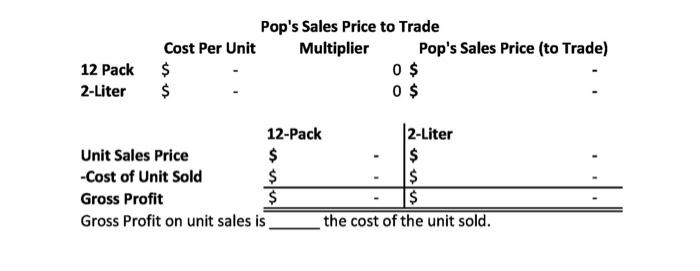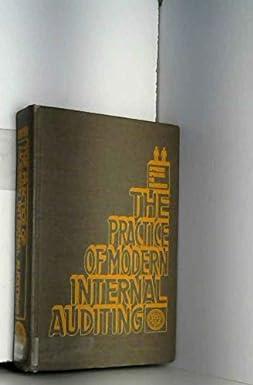Question
BACKGROUND Claude LaFontaine emigrated from France and settled in Rockford, Illinois. In France, Mr. LaFontaine had earned both a bachelors and masters degree in food
BACKGROUND Claude LaFontaine emigrated from France and settled in Rockford, Illinois. In France, Mr. LaFontaine had earned both a bachelors and masters degree in food chemistry and worked for several food processing companies. Claude came to the United States when his cousin, Laurent Beaufort, offered him the position of senior food chemist at Beaufort French Foods, a growing producer of French cuisine for the American market. Although he enjoyed working with family members, he did not feel challenged by his new job and therefore began tinkering with various experiments at home.
Mr. LaFontaine was fascinated by the variety of carbonated beverages available in America. He enjoyed the refreshing sensation caused by carbonation, but felt all of the American soda pops were too sweet and none of them provided the depth of flavor to which he had been accustomed with non-carbonated beverages in France. After much experimentation, Mr. LaFontaine developed a formula for a multiple-fruit-flavored sparkling water. After sampling his creation, friends and family alike responded in an overwhelmingly positive manner. Many of them encouraged him to bottle the beverage and sell it locally. Indeed, Mr. Beaufort was so excited about the beverage that he offered to provide the necessary production equipment, facilities, and capital.
After much discussion, Mr. LaFontaine and Mr. Beaufort decided to call the beverage Claudes Sparkling Water and began marketing it in the Rockford area. Consumer response was very strong. Within five years Claudes Sparkling Water was selling well throughout the Midwest region. To keep up with demand, and to develop a more focused marketing strategy, the cousins detached the beverage operations from Beaufort French Foods and established LaFontaine Incorporated. To compete more directly in the non-cola carbonated drink market; Mr. LaFontaine developed several individual fruit-flavored sparkling waters, which were marketed under the LaFontaines (Orange/Grape/Strawberry/Cherry/Lemon) Sparkling Water brand name. This strategy proved to be highly successful and after five years LaFontaine, Inc. began selling its sparkling water on a nation-wide basis.
Over the next 20 years, LaFontaine Inc. failed to introduce any new products, but experienced steady growth in both sales and profits from the base line-up. During this time period, the company achieved a respectable 5.1% share of the non-cola market and subsequently made its first public offering. After nearly 35 years in business Mr. LaFontaine and Mr. Beaufort both retired and sold all of their holdings. For the next eight years Mr. LaFontaines son, Claude, Jr., served as chief executive officer, but was recently forced to resign after failing to achieve unit and dollar sales growth. Jean Claude Van Damme, formerly the firms chief financial officer, has been appointed CEO and charged with growing the company.
CURRENT SITUATION Upon assuming his new responsibilities, Mr. Van Damme and his management team performed a thorough S.W.O.T. analysis. The corporate history and culture had long emphasized slow gradual change. They concluded the company possessed neither the core competencies nor the capacity to change that would be necessary to diversify into an entirely new industry. Accordingly, LaFontaine Inc. would need to devise a new strategy by which to achieve growth within the sparkling water industry.
The team carefully considered several alternative ways of revamping its strategy within the non-cola market, but none of them seemed to have the potential for the magnitude of growth the team desired. The team then began to consider the unthinkable the possibility of entering the cola market. Although the risks were high, so were the possible rewards with each market share percentage point in the domestic soda market worth approximately $700 Million in annual retail sales. Under Mr. Van Dammes leadership, LaFontaine Inc. began the process of developing a strategy with which to compete directly with the giants of the Cola industry. The research and development team created a formula for Claudes Soda Pop that performed very well against Pepsi and Coke in national blind taste tests. Ecstatic about these results, Mr. Van Damme recently met with a group of venture capitalists in an effort to gain financing necessary to launch the new brand. The venture capitalists were intrigued by the idea, were impressed with the preliminary marketing research results, and believed LaFontaine Inc. possessed several requisite strengths. However, they highlighted the fact that entering the cola war was a very different battle-field than the non-cola market in terms of the (a) strength of the competition, (b) ferocity of the battles fought, and (c) resources required for successful marketing. In particular, the venture capitalist had several concerns regarding formula costs, economies of scale, and price points. In order to provide the necessary information in these areas, Mr. Van Damme has assigned you to the project described below.
COST ESTIMATION PROJECT Mr. Van Damme has requested that you analyze the cost of making Claudes Soda Pop and then compare that cost to the current price points offered by Coke and Pepsi on both the 12 Pack of 355ml Cans and the 2 Liter Bottle. Your predecessor recently left the company, but has already pulled together the raw cost data you will need to complete the project.
Sales Projections Over the past 12 months the corporation has been evaluating the product under the brand name Claudes Soda Pop in a Salt Lake City test market. Lacking any specific pricing expertise the company matched the on-shelf pricing of Coke and Pepsi, and determined the following sales estimates.
Sales/Year Claudes 12 pack (355ml/12 Cans) 105,600,000 Cases Claudes 2 Liter 202,500,000 Bottles
Raw Material Costs
CLAUDES SODA POP - SECRET FORMULA Ingredient % in Formula Cost Per Liter of Ingredient* Carbonated Water 73.0% $0.15 High Fructose Corn Syrup 11.2% $0.45 Sugar 6.3% $0.48 Carmel Color 3.0% $1.62 Phosphoric Acid 2.7% $0.18 Caffeine 2.1% $0.20 Citric Acid 1.1% $0.20 Cola Flavor 0.6% $4.40 *Costs are delivered prices to the Plant Based on a conversation with the engineering staff the 355-ml cans need to be filled at 357 ml to avoid under-pack, while 2 Liter bottles need to be filled at 2.008 Liters per bottle. In addition to overfill, the manufacturing engineers expect to incur a 2.8% loss of raw materials during the making phase of production.
Packing Material Costs
355 ml Can $ 28/1000 Cans 355 ml Lid/with opener $ 10/1000 Lids 12 Pack Carton $ 180/1000 Cartons 2 Liter Bottle $ 135/1000 Bottles 2 Liter Injected Molded Lid $ 30/1000 Lids Manufacturing Engineers estimate that approximately 2.5% of all packing materials will be damaged/lost through production and warehousing.
In addition to these costs, Claudes will additionally need to purchase several new molds for 2-Liter Bottles and Lids at a total cost of $2,150,000. (Amortized Straight line over 3 Years.) The Company considers these expenses a part of Packing Materials and charges all bottle mold amortization to only the 2-Liter Bottles.
Manufacturing Expense Claudes fruit-flavored sparkling water volume has maximized the capacity in the current production facilities. LaFontaine Inc. has decided to avoid the hassle associated with building a new plant and utilize a contract manufacturer to produce Claudes Soda Pop. After investigating several contract manufacturers, the purchasing department selected Koss Enterprises based on their ability to meet rigorous quality measures at a competitive price. Koss Enterprises will require a $2.0 Million Supplier Advance for new equipment (LaFontaine Inc. expects the equipment to last three years and recommends using straight-line amortization for all Supplier Advances.) In addition to these costs Koss will charge the following fees. (Note that both products will be charged a fee for the making and packing process.) Making Fee - $ .047/Liter Processing (Making Fee is applicable for both Can & 2 Liter Processing) Packing Fee - $ .026/Can Bottling; $ .052/2 Liter Bottling
Distribution LaFontaine Inc. has decided not to invest in the extensive sales/distribution system of its competitors. Instead LaFontaine Inc. will deliver its products in full truckloads directly to its customers distribution warehouses. Distribution costs should be allocated based on space utilization. The warehouse supervisor has pulled together the following assumptions: 80 of the 12 Pack Containers fit on a single Pallet 250 of the 2 Liter Bottles fit on a single Pallet 48 Pallets of either size fit on a normal truck
The Distribution Coordinator estimates that the average cost for a trucking company to deliver a full truckload is $1,650/Truckload. Additionally, a one-time cost of $17 per pallet will be charged for Storage and Handling at the warehouse.
Other Fixed Costs Several departments will require additional resources on a long-term basis to appropriately staff the additional requirements of the new brand. Incremental Wages and benefits for incremental Purchasing/Planning Personnel amount to $370,000/Year. Additional non-manufacturing costs are expected to increase as follows: Research and Development $ .5 Million/Year General Administrative $ 1.75 Million/Year Advertising and Promotional Spending $ 6.3 Million / Year
Allocation Basis Unless otherwise indicated LaFontaine Incorporated allocates all fixed costs based on sales projections (in Liters).

Step by Step Solution
There are 3 Steps involved in it
Step: 1

Get Instant Access to Expert-Tailored Solutions
See step-by-step solutions with expert insights and AI powered tools for academic success
Step: 2

Step: 3

Ace Your Homework with AI
Get the answers you need in no time with our AI-driven, step-by-step assistance
Get Started


